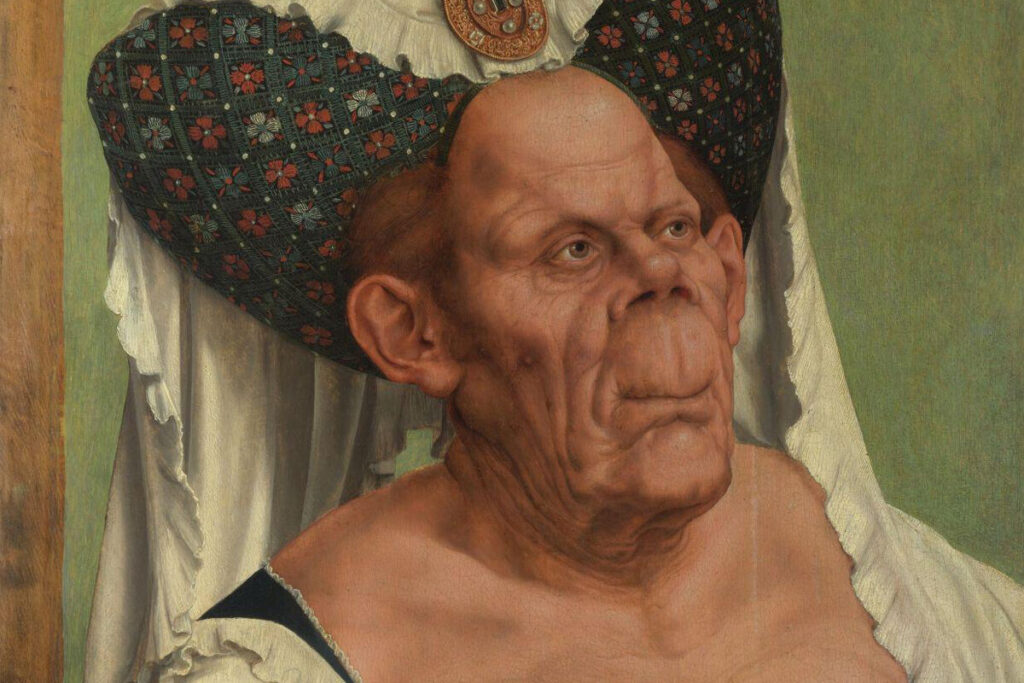
In the latest in our series looking at potential medical issues in famous works of art, Dr Keith Hopcroft considers ‘The Ugly Duchess’ by Quentin Matsys
This picture was also, equally unkindly, known as ‘A Grotesque Old Woman’. It was thought to be a satirical take on ageing women striving to remain attractive. Which it could be, but it also has significant features suggesting a bone condition.
Hint: Look at the bones of the face.

Answer: There’s apparent bossing of the skull, an enlarged jaw and prominent orbital ridges, plus a long distance between the nose and the lips. All these could be compatible with Paget’s disease, as hypothesised in this article1 – though the suggestion that the obvious osteoarthritis in her right thumb might be a Paget’s complication too, is a little tenuous. Half a mark if you also thought of acromegaly – surely that’s also in the differential?
Dr Keith Hopcroft is Pulse’s medical adviser and a GP in Basildon, Essex
Reference
1. Cook C. A grotesque old woman. BMJ 2009;339:b2940

















READERS' COMMENTS [2]
Please note, only GPs are permitted to add comments to articles
Not convinced that the portrait is either of a woman, that it is of a actual person, or that it is diagnostic for Paget’s.
The leonine maxilla and flared nostrils could be a Paget’s feature but that occurs in other disease’s (e.g. leprosy) and the frontal enlargement – bossing is not symmetrical. At first look, it could be a X-dressing man with scrunched up gynaecomastia : – But who knows?
This has been questioned before – composite of features, perhaps a satire.
Matsys & Leonardo were contemporaries and Leonardo’s version is attached.
Excerpt from National Portrait Gallery (London, UK): –
Renaissance Portrait of “Ugly Duchess” Likely Depicts a Man.
“A curator at London’s National Gallery believes the subject of painter Quinten Massys’s painting “is most likely a he”. March 26, 2023
Flemish painter Quinten Massys’s “The Ugly Duchess (An Old Woman)” (1513) may have actually been portraying a man all along. In light of the 16th century-painting anchoring an exhibition at the National Gallery in London that opened last week, curator Emma Capron believes that “she is most likely a he,” citing the figure’s bone structure and dated accessories as well as the context of the artist’s inspirations
“It’s not Paget’s, nor any of the other suggestions like dwarfism or elephantiasis,” Capron explained to the Guardian when talking about the new research surrounding the Duchess. “I’m really reluctant, too, to have doctors going around galleries and giving diagnoses.
Interesting last sentence!!!!
Forgot the attachments>
/Users/kmldoc/Desktop/Grotesque_Head.jpg/
Users/kmldoc/Desktop/Wenceslas_Hollar_-_Two_deformed_heads_behind_a_wall_(State_2).jpg